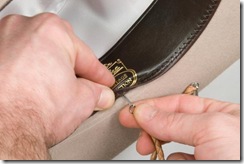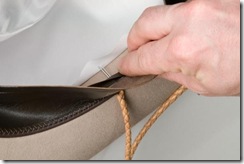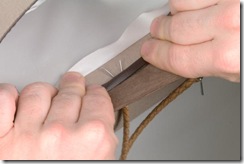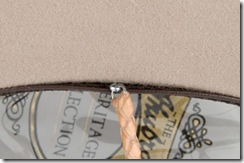We were recently honored by the visit of two highly distinguished cowboy arts craftsmen.
Alfredo Campos, from Federal Way Washington, is one of the world’s foremost horsehair hitchers. In 1999 he was honored with a National Heritage Fellowship from the National Endowment for the Arts. David and Alfredo have known and encouraged each other for a very long time. Alfredo provided a quirt or two for our old Ballard store.
A couple of weeks ago Alfredo brought his Argentinian friend, Pablo Lozano to our new location in Bothell. He was accompanied by translator and Floridian cowboy Domingo Hernandez.
Pablo learned much of his craft from Luis Alberto Flores of Buenes Aires whom David had corresponded with from 1966 until recently. Luis Flores had hosted Bruce Grant in Argentina and taught him techniques which appear in the Encyclopedia of Leather and Rawhide Braiding. Pablo showed us a braid (using kangaroo leather!) that Bruce Grant had not documented in his book.
Pablo is a member of the Traditional Cowboy Arts Association.
We had an excellent time exchanging braiding tips and looking at the gaucho’s amazing work.
You can get some idea in the photographs below the patience and skill invested in creating these beautiful pieces.
Below, Alfredo’s hitched horsehair work:
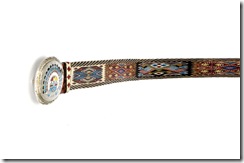
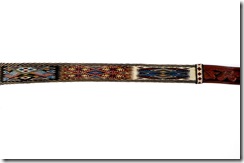
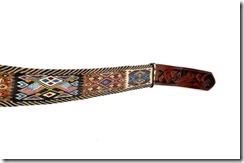
Hitched horsehair belt (three sections of the belt)
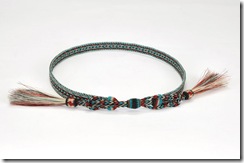
Hitched horsehair hat band
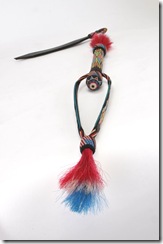
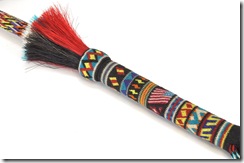
Hitched horsehair quirt
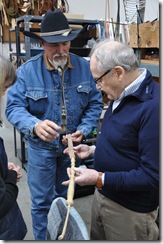
Domingo and David
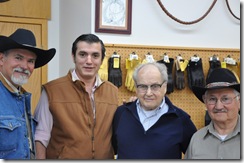
Domingo, Pablo, David and Alfredo
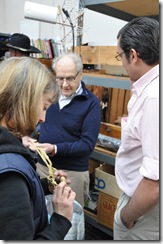
Meagan, David and Pablo
Below, Pablo’s rawhide work. The colors are obtained from coffee or walnut shells.
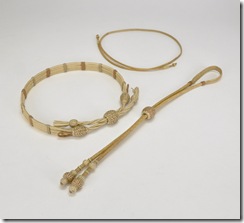
Hatband, eyeglass holder and lanyard
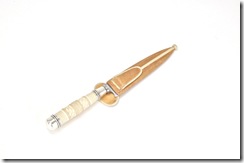
Knife handle wrap and scabbard
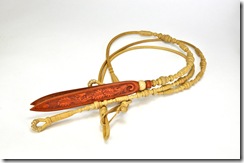
Reins with quirt end
LEARN MORE ABOUT:
Braiding Leather
Kangaroo Lace
